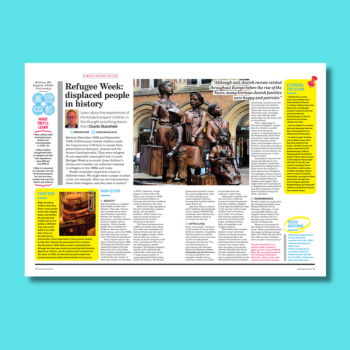One especially meaningful way to mark Refugee Week is to revisit the stories of the Kindertransport children. This Kindertransport KS2 lesson plan will help children to learn about the experiences of children shortly before World War 2.
Between December 1938 and September 1939, 9,354 mainly Jewish children made the long journey to Britain to escape Nazi persecution in Germany, Austria and the former Czechoslovakia.
People remember important events in different ways. We might wear a poppy or plant a tree, for example. Explore how we can commemorate these child refugees, and why it matters.
Kindertransport KS2 learning objectives
- Learn why children left Germany, Austria and Czechoslovakia in 1938-39
- Find out what children brought with them as refugees and how their experiences were different and difficult
- Think about why it is important to remember not only the Kindertransport, but also the many families that were left behind and suffered
Starter activity
Begin by asking children what they think causes people to become refugees today, and whether the journeys that refugees go on are similar or different from ones we all make in our daily lives.
Focus on the differences, and provide a short explanation of why parents wanted to help their children flee persecution from countries like Germany in 1938.
Make a point of explaining that although we have laws aimed at preventing discrimination against our citizens, not all countries past or present are the same.
In 1938, the Nazi German government had already been persecuting Jewish families for five years.
Charlie Stansfield is a teacher with a master’s degree in the Second World War. He currently works at the National Holocaust Museum, whose team visits schools nationwide. The National Holocaust Museum has created an app where children can follow Leo Stein, a Kindertransport refugee. You can download the app for free.














